

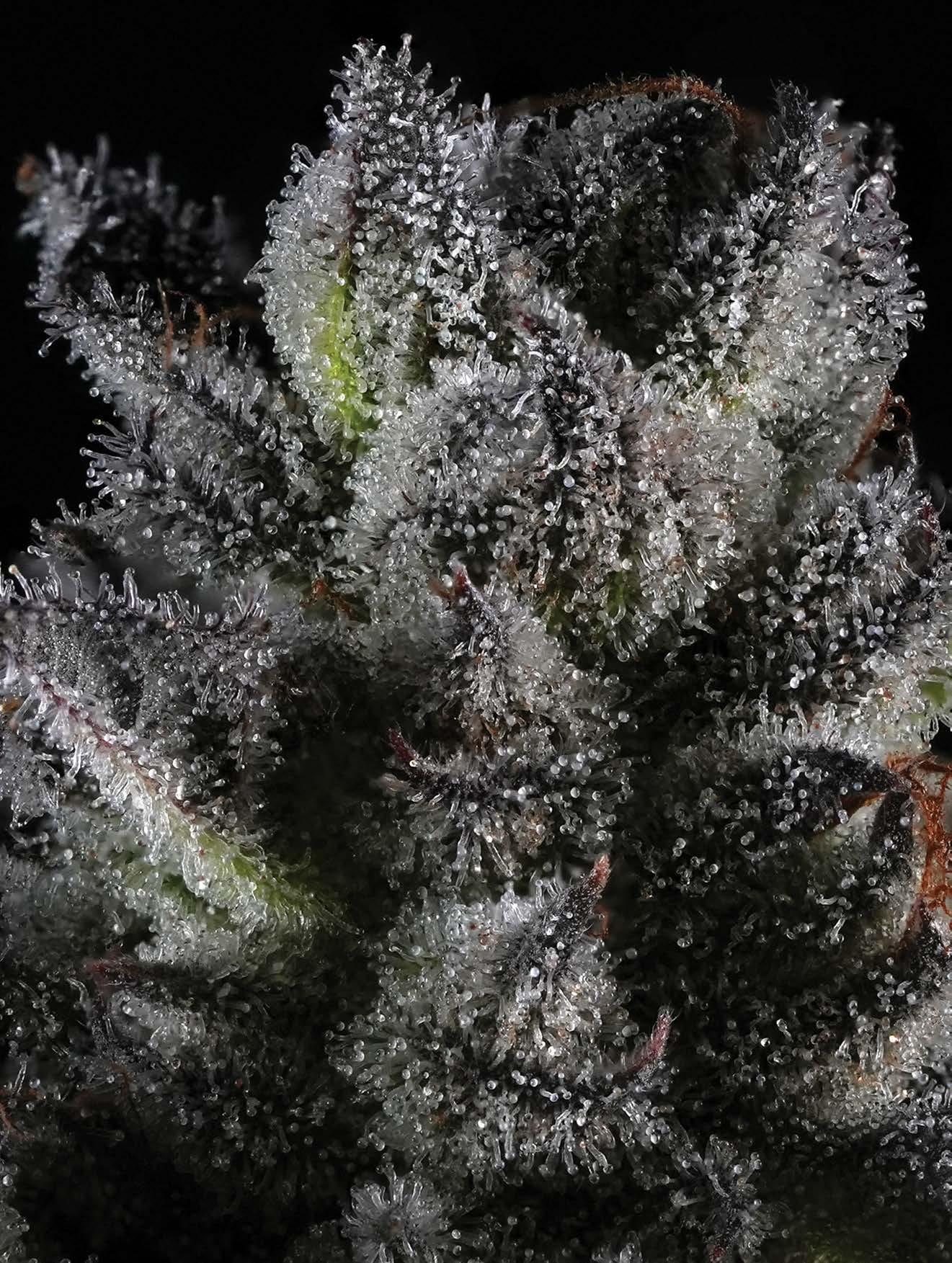




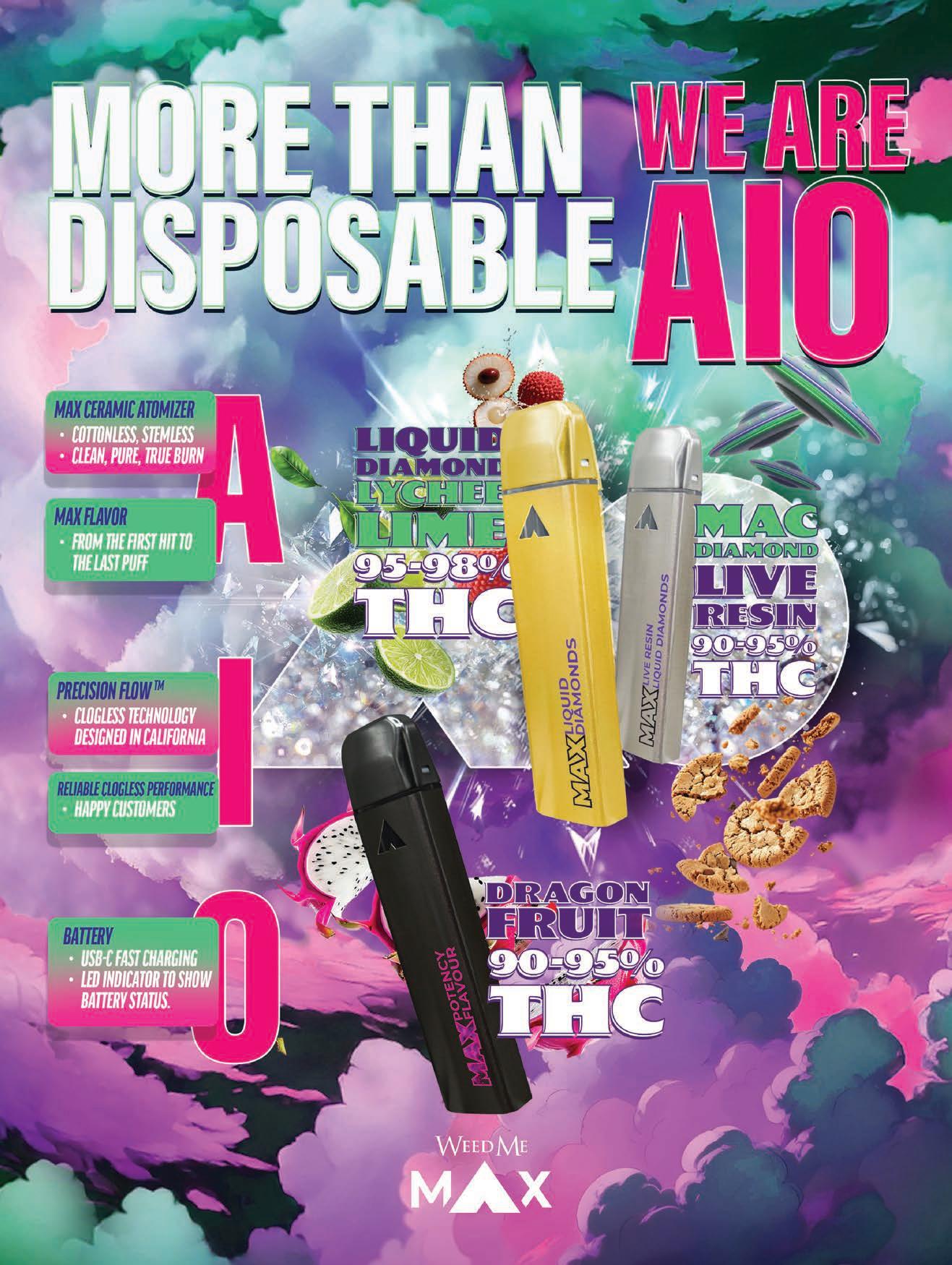









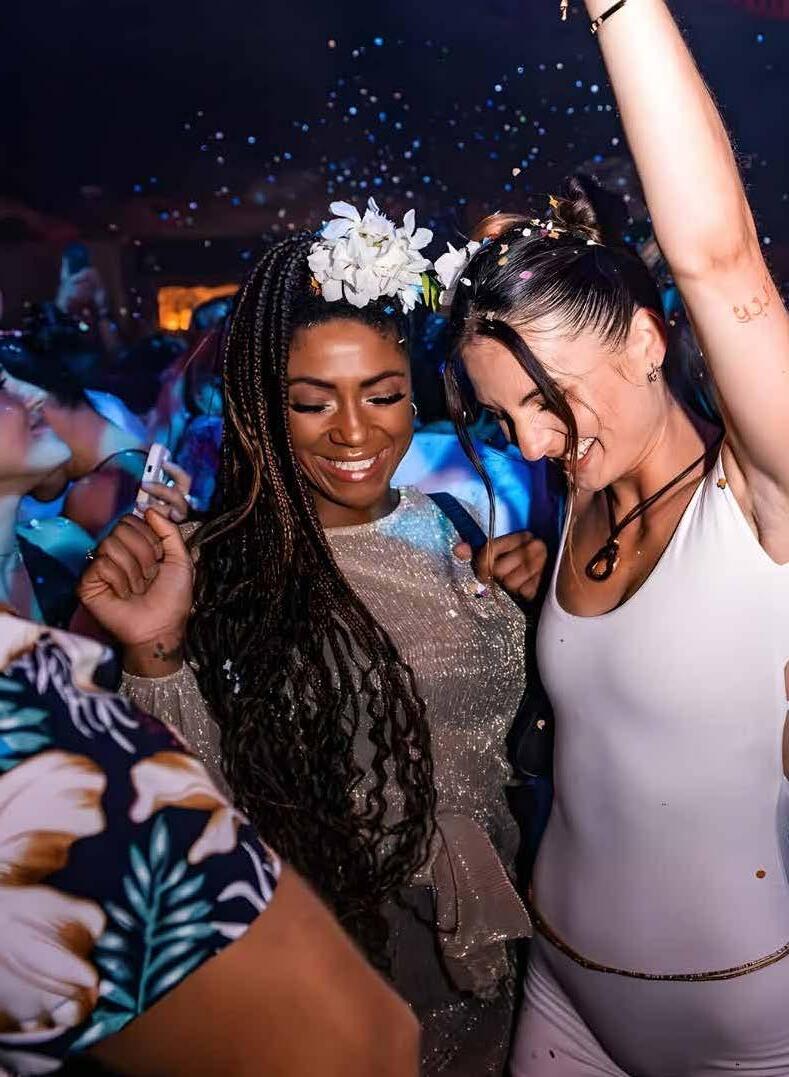
Ibiza is about to be invaded, albeit not for the first time.
By Joshua Ostro
The famed White Isle, the westernmost of Spain’s beatific Balearic archipelago and nowadays home to one of the world’s wildest party scenes, has been settled for nearly 2,700 years. It’s been controlled by Carthage, ruled by Rome, subjugated by Byzantinians, annexed by an Islamic Caliphate and even briefly conquered by Norwegian King, Sigurd the Crusader, before being overrun by Ottomans and conquered by Catalans and Castillians.
This summer another Norwegian royal, EDM kingpin Kygo, will be leading an army of ravers back to the island for his exclusive Sunday residency at 7,000-capacity superclub Ushuaïa Ibiza where, from July 20 to August 31, he’ll have the throngs in board shorts and thongs dancing outdoors to his trademark tropical house.
Unlike the chilly chillout or space disco sounds of his Norse crossover compatriots Röyksopp and Lindstrøm & Prins Thomas, the electronic music Kygo produces and plays out is an o shoot of Balearic Beat, a subgenre of house music that first emerged from Ibizan DJ booths back in the mid-1980s.
But the story of Ibiza’s role in the raveolution goes back even further. Much like the Indian beach enclaves of Goa, where d-lysergic dance parties would eventually birth psychedelic trance, Ibiza was also colonized by young hippies from across the western world looking to get gone and let loose.
What they found on Ibiza in the 1960s was a still sleepy Spanish community of creatives and nonconformists who had begun fleeing there in the 1930s to escape the fascist dictatorship of Francisco Franco, creating a welcoming atmosphere for the bohemian hippies who followed.
Prone to swimming naked on the beaches during the day and partying, often also naked, through the night (and into the next day) at countryside estates known as fincas, these counterculture kids from Europe and North America, including a growing number of Vietnam draft dodgers, got their groove on to folk and rock.
In fact, Ibiza was a big enough draw by 1971 that it earned a mention in David Bowie’s “Life on Mars?” and a whole stanza in Canadian folk icon Joni Mitchell’s iconic classic, “California,” which she wrote on the island. “I bought me a ticket / I caught a plane to Spain

/ Went to a party down a red dirt road / There were lots of pretty people there / Reading Rolling Stone, reading Vogue,” she sang. “They said, ‘How long can you hang around?’ / I said ‘a week, maybe two / Just till my skin turns brown.’”
A couple years later, Ibiza got its first nightclub, the now legendary Pacha, which was a converted old farmhouse but boasted an open-air dancefloor that could keep the records, famously beginning with The Beatles’ Sgt Pepper’s Lonely Hearts Club Band, spinning until sunrise. It was soon followed by Amnesia and then Ku Club (now called Privilege, “the largest nightclub in the world”) which are all still going very strong and attracting thousands every and all night.
As the decade advanced, Ibiza’s discotheques became places to spot Mick Jagger, Bob Marley or George Harrison while the music began moving from rock, reggae and soul toward funk, Italo disco and Europop, especially after Technics turntables arrived to make beat mixing a priority.
Then came the 1980s. As Frankie Knuckles began punching out what would become known as house music in Chicago, the post-disco dance genre started spreading around the world. Once it hit Ibiza’s shores, Amnesia resident DJ Alfredo began mixing house into his genre eclectic yet always euphoric marathon sets, creating what would soon be dubbed Balearic Beat.



“It was freer than other places, and cheaper. Background or social class didn’t matter. I was the only DJ,” the Argentinian expat, who passed away last year, told The Guardian in 2007. “We opened at 3 a.m. and went on until midday, so people would come down after the other clubs shut.”
Ibiza was already becoming a less hippie holiday destination, especially in the UK after Wham! filmed their 1983 hit “Club Tropicana” music video at the island’s already iconic Pikes Hotel. In 1987, four of those British sunseekers were then-fledgling DJs Paul Oakenfold, Danny Rampling, Nicky Holloway and Johnny Walker who went to celebrate Okie’s 24th birthday.
Their ecstatic experiences, both literally and figuratively, during that week at Amnesia changed the foursome, and the history of dance music along with. Bringing Ibiza’s all-night energy back home to London, they had launched legendary club nights, Shoom, Spectrum, Future and the Trip by year’s end, injecting Balearic beats and acid house into London clubs and powering the UK’s second summer of love.
As the rave scene grew global through the 1990s and into the early 2000s, so did Ibiza’s status. New superclubs opened, like Space and Eden, booking the world’s biggest rave DJs ranging from Carl Cox and Pete Tong to Sasha and Digweed to



Paul van Dyke and Tiesto. But the underground still held sway, from 24-7 debauchery at Manumission Motel in a converted 15-room brothel to full-moon fiestas and after afterparties. A British poll from a few years back found four in 10 voting Ibiza’s postmillennial era as the dance scene they’d most like to revisit, ahead of 80s acid house and 90s jungle.
Of course, it wasn’t all arms-up on the island. DJ José Padilla’s downtempo take on Balearic during his sunset sets at a club now world-famously known as Cafe del Mar thanks to its popular compilation series set the standard for the chillout scene that followed.
When rave went fully mainstream in the later 2010s, turning electronic dance music into EDM and all-night parties into all-weekend day festivals, Ibiza continued playing a pivotal role in the culture. While mainstream superstar DJs like David Guetta and Calvin Harris helped usher in a luxe VIP bottle service vibe — and the island made it back onto the pop charts with Mike Posner’s Grammy-nominated “I Took a Pill in Ibiza” about an adventurous night during an Avicii gig — residencies by underground figures like techno icons Richie Hawtin and Sven Vath have kept the island’s original counterculture aesthetic alive.
While Ibiza’s dance scene went quiet during the peak of the pandemic, it has since returned to its rightful place as the planetary party capital, with Pacha now into its sixth decade, club crowds once again super-sized and acclaimed artists like Martin Garrix, BLOND:ISH and, as mentioned, Kygo are bringing the beats back.
After taking last year o from the island to tour the world behind his smash self-titled album, the tropical house superstar who first played Ibiza in 2014, long before boasting 26 billion streams, returns like a conquering king. Booked for a seven sunny Sunday day parties at Ushuaïa, recently ranked third in DJ Mag’s top 100 clubs poll, Kygo will headlining alongside a host of high-octane openers like Afrojack, Galantis, Matt Sassari and Oliver Heldens.
So get yourself out to this Balearic beach party paradise sometime this summer — the white island where hippies held court, raving was born and dancing is a season — and see if you can’t find a higher love.
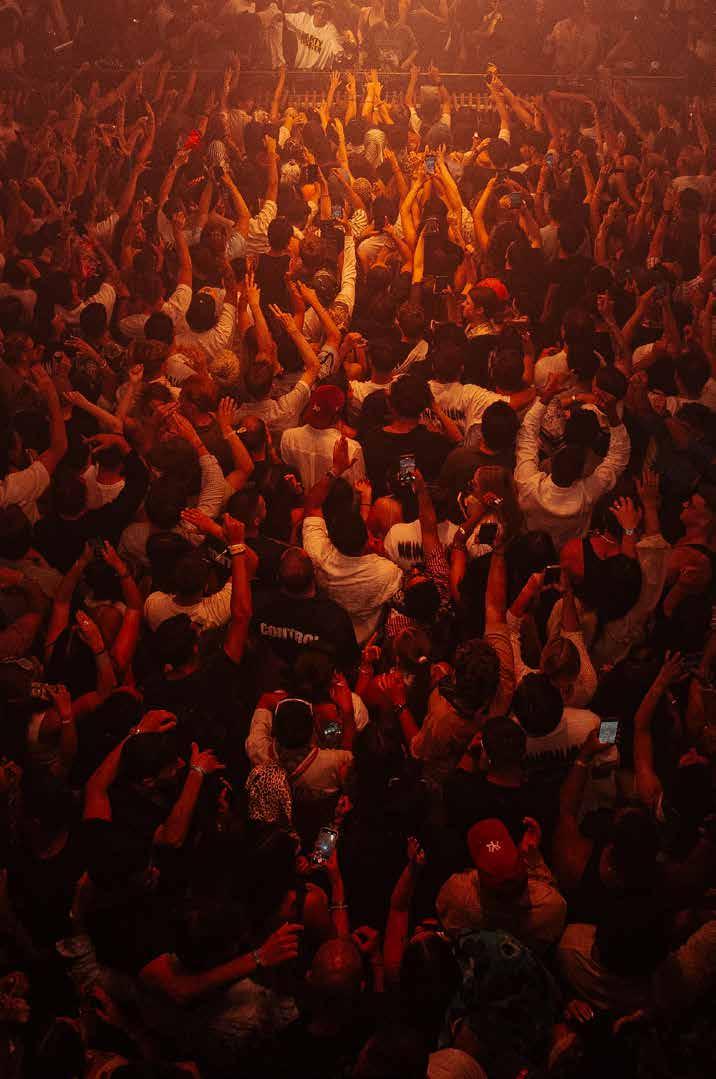











With Flight School, Conor Cutz’s project with fellow DJ Guillaume Viau, opening for Klingande on Day 1 of KIND Summer Fair, their emotional, global-inspired sound is about to take centre stage. Fresh o a signing with Palm Tree Records and the release of their new single, “Light Me Up”, Flight School is ready for take-o . Nicole Wol , Chief Experience O icer and executive producer of Summer Fair, caught up with Cutz, one half of Flight School, ahead of their KIND performance to talk sound evolution, new energy and what fans can expect from their live show that soars.
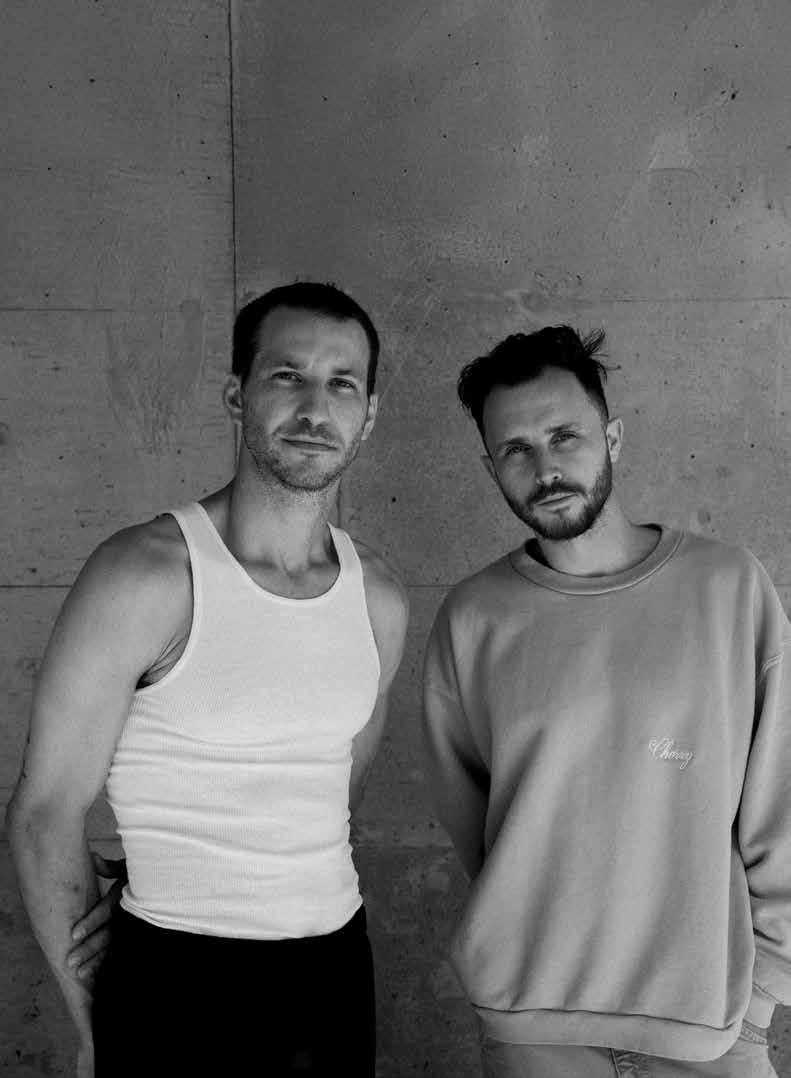

KIND (Nicole Wol ): You’ve been performing at KIND events for years now, but this summer feels di erent. You’re opening for Klingande at KIND Summer Fair as a part of the duo, Flight School. What can fans expect?
Flight School (Conor Cutz): Yeah, this one’s special. KIND has always felt like home, but to be playing with Gui as Flight School, debuting this next chapter of our sound, it feels like lifto . We’ve been creating behind the scenes for so long and now it’s time to share it live. Fans can expect emotion, energy and a sound that’s evolved.
NW: So let’s rewind. How did Flight School even begin?
CC: Gui and I were both DJing in Toronto, often coming up for the same high-profile gigs. There was a healthy sense of competition — we knew of each other, long before we actually connected. One day we grabbed lunch, started chatting about a remix opportunity he was exploring and we ended up heading straight to my studio to work on it together. That remix went wild, and it sparked something bigger.
NW: That studio session was the start of Flight School?
C: Pretty much. We had a natural chemistry and it all clicked fast. A few more remixes later, we knew we had something worth building.
NW: And the name, Flight School, where did that come from?
CC: Gui had the name tucked away from a previous creative project and it just made sense. As DJs we travel a lot, our sound pulls inspiration from all over the world, and we wanted a name that felt big, something that we could grow into.
NW: You both went from being solo artists to part of a duo… that isn’t always easy. How do you two work together creatively?
CC: We really complement each other. I handle all the production melodies, drums, chords, the technical build of the track. Gui is more focused on lyrics and storytelling, but also our branding, visuals and social presence. We’re two halves of a puzzle; he hears the words, I hear the beats. We both know our strengths and we trust each other to lead in those lanes.
NW: And that duality really shows up in the music. Your latest record, “Light Me Up” is moody, but has this powerful pop energy.
CC: That contrast is intentional. We love building moody, cinematic progressions that hit emotionally, but pairing them with vocals that are catchy and accessible. We want people to feel the weight of the music, but also have something they can sing along to.
NW: How would you describe that sound?
CC: There’s definitely a duality to it — emotional, cinematic, but also driving and danceable. We want to take our sound around the world and we want people to feel something. Whether it’s a deep breath on a night drive or a release on a packed dance floor, we want our music to move people. That’s always the goal.
NW: You mentioned this is a new chapter. I remember seeing on Instagram last November that Flight School was signed by Palm Tree Records, Kygo’s label. That’s huge!
CC: Getting signed to Palm Tree Records was incredibly validating. You send a lot of demos out there, but Palm Tree really believed in our vision and that kind of validation means everything.
NW: That sounds like a huge moment. Any other career highs to date?
CC: We just dropped “Light Me Up” with Adventure Club and Rev, which was a huge bucket-list collab. Rev was one of the first artists we dreamed of working with. And honestly, our first single, “Figure It Out”, charting in Canada. We didn’t know what we were doing yet and it just blew up. We released it on a Wednesday morning, expecting 30 streams and within days it was at 30,000 and climbing.
NW: And I saw one of your songs was used by the NFL last season with a clip featuring Taylor Swift.
CC: Yeah, that’s “Undertow,” it was wild! We get notifications when someone uses our sound and suddenly it was Manchester United, Chipotle, SKIMS and then the NFL. That video with Taylor was totally surreal.
NW: What’s next for Flight School?
CC: Our next single should be out around KIND Summer Fair and we can’t wait for the audience to hear it. We’ve been in studio mode for months, so now it’s about getting our records out there.
NW: Sounds like KIND Summer Fair is going to be the perfect stage.
CC: We’re just excited for people to hear what we’ve been working on. This is a new chapter for us, and it’s about emotion, energy and connection. We’ve been creating for so long, now it’s time to perform.




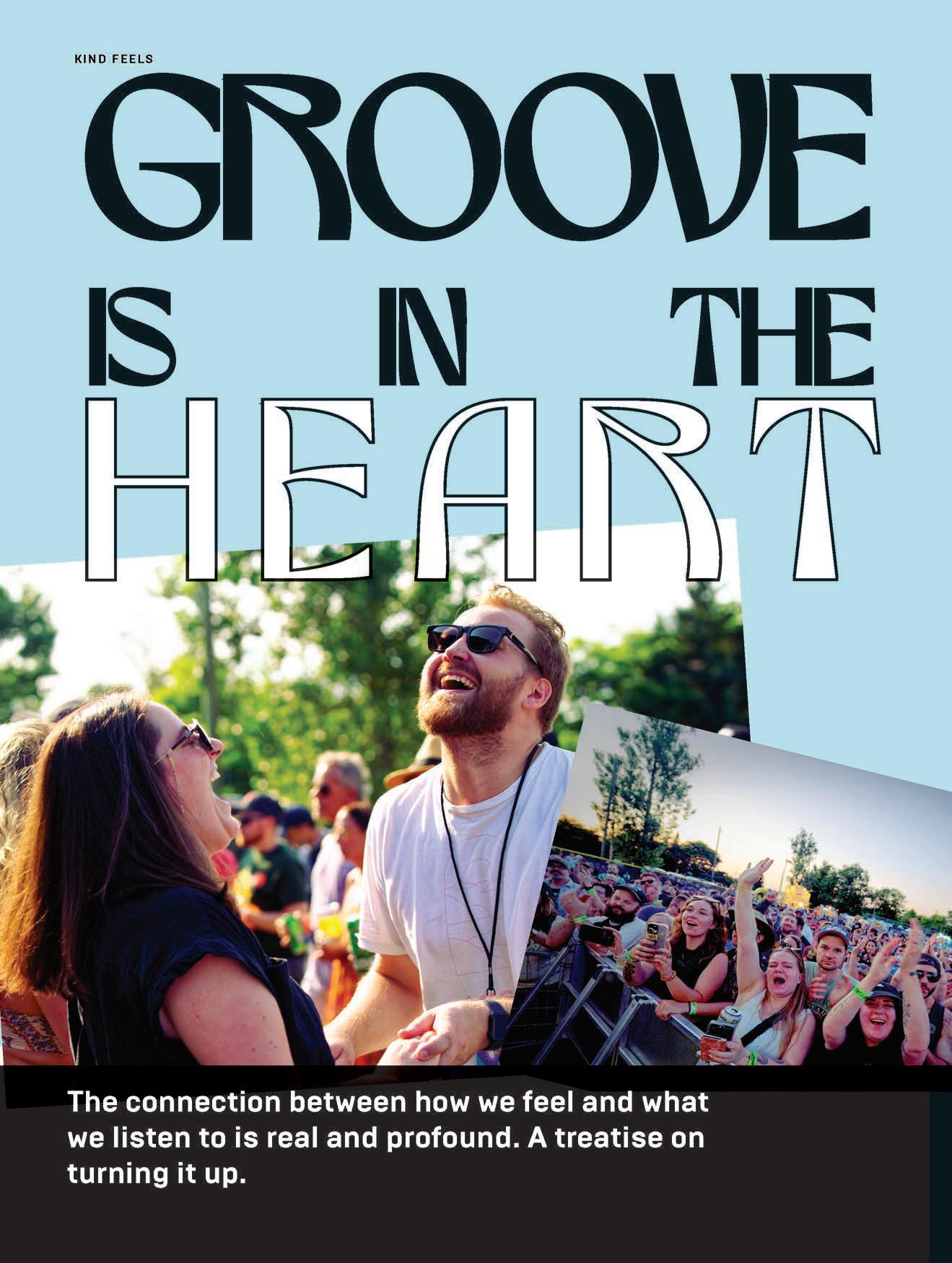



















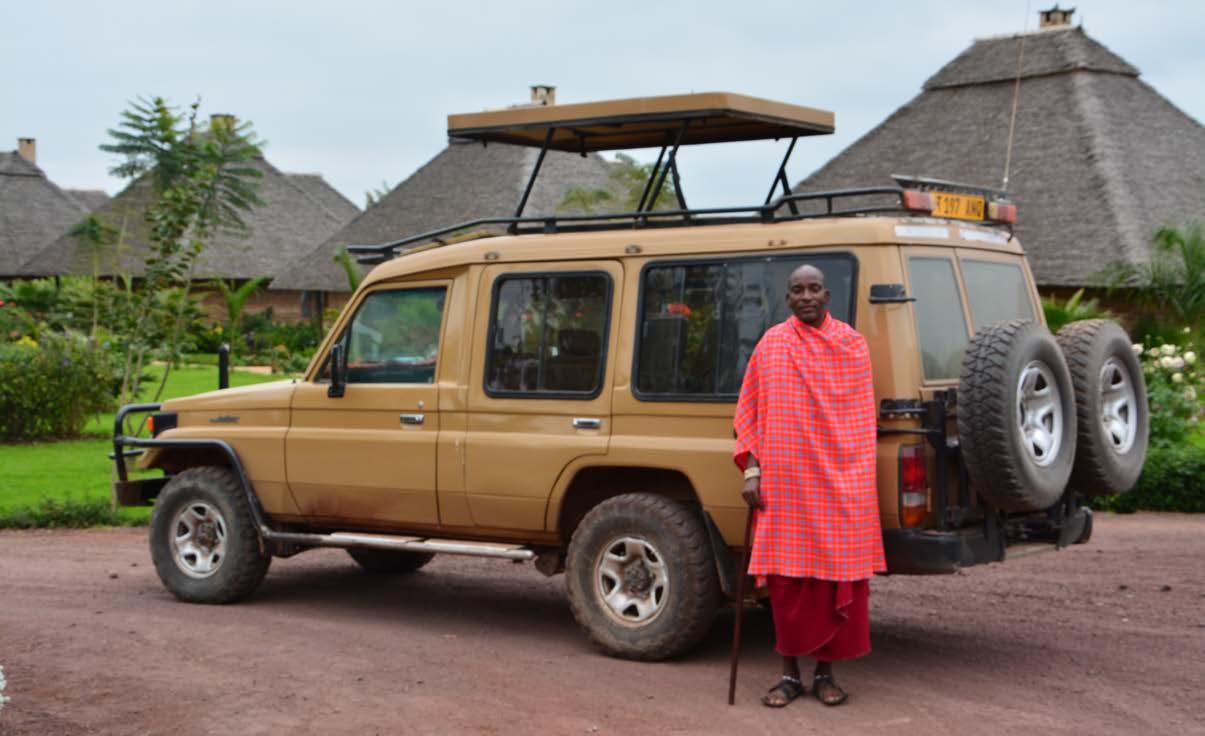
On her properties, which include beach resorts, spas and tented camps on game reserves, travelers are able to experience a wide range of bucket list experiences, oftentimes in the same day.
“I just don’t know of any other place where you can see game drives with wild animals in the morning, enjoy a picnic lunch in the park and then spend the afternoon on a beach scuba diving and snorkeling while, for dinner, enjoy gourmet local cuisine,” says Mermerali, whose flagship hotel in Zanzibar is a 194-room fourstar all-inclusive boutique resort.






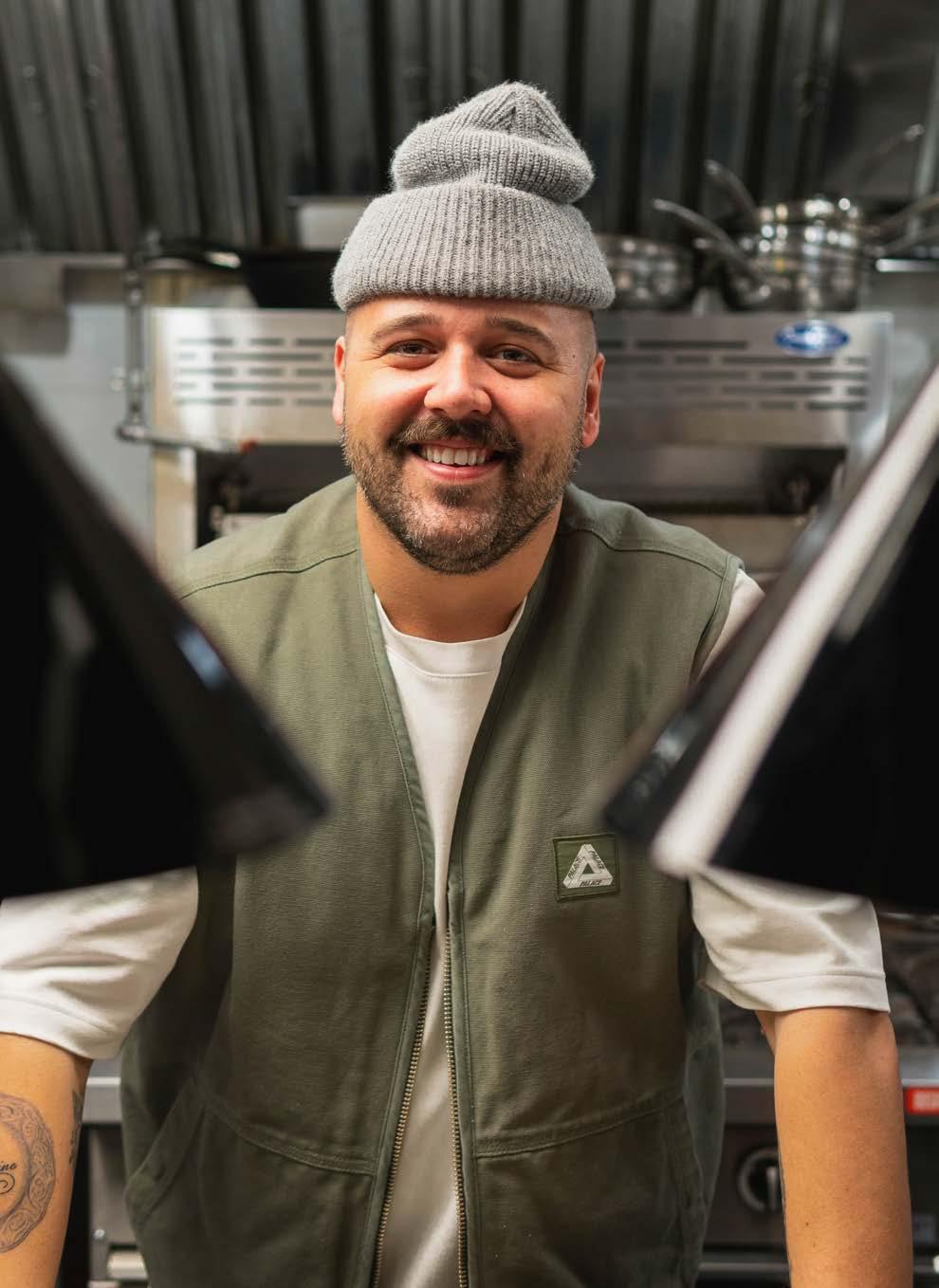


Inside the madcap adventures of Laurent Dagenais, weed-smoking Montreal food influencer making the most of his moment with two restaurants, a cookbook, and, oh yeah, a chef’s fashion line
“Always Hungry,” is the name of Laurent Dagenais cookbook and also the name of his new line of fashion-forward chef aprons and knives. Dagenais, who posts viral cooking tutorials, oftentimes after smoking a joint, is inarguably one of Canada’s newest cooking sensations, a Matty Matheson heir, and the 32-year-old Frenchman says he’s enjoying the ride with family, herb, big dreams and close friends.
“If this happened when I was 21, I’d probably be dead by now, but by becoming successful at my age I’m mature enough, I hope, to make the most of everything,” says Dagenais, as a able on the other side of a Zoom screen as he is in his popular videos trending on TikTok. “I keep the food component serious, but it’s only food, it’s not rocket science and I’m never playing a character — staying authentic to myself is everything.”



“Everything” would be a good answer to what Dagenais has planned next, as he’s simultaneously working on two restaurants, Limousine, near his home on Montreal’s South Shore and a Montreal steakhouse in 2026. But that’s not all. In June, Dagenais did a pop-up at Paris Fashion Week to launch his stylish brand of chef knives and aprons (also started with his brother and best friend), and Dagenais says all that’s just the tip of the iceberg. He worked in restaurants and tried finding his way through the wilderness for years. Today, he’s not just a businessman; he’s a business, man. Dagenais, smiling beneath a toque styled e ortlessly, feels his Quebecois genes are part of his international appeal.
“We’re just a bunch of crazy Frenchies — we like to party, enjoy food, drink, and work as little as possible,” says Dagenais in response to what’s behind his skyrocketing fame. “Our


ancestors had a way of doing things, not just the language, but how we can drink in the park and our bars close later than anywhere else in the country. It’s the French blood in our veins.”
Rabbit with Mustard Sauce is Dagenais’ most famous recipe and it combines all the elements that makes him beloved. The dish was inspired by something he ate with his father and brother outside Paris and then recreated around a fire on a camping trip in Quebec with his friends. For the cooking star, a meal is best in its purest reproduction. He eats three-starred Michelin meals, but is no fan of complicated gastro-reductions: fresh ingredients, real flavours, simple techniques makes him happiest, especially alongside a great big spli to share with family and friends. “I like simplicity, like what you get in the best Italian food; take the best tomatoes,
olive oil and pasta and let the ingredients be the star,” Dagenais says, “It’s hard to fuck up what’s real.”

Of course, with his eye on growing his business and seeing his moment of fame turn into a lifetime career, it’s been suggested that he’d move further faster if he quit smoking weed. There’s no need for him to pu joints in his videos and Dagenais knows it could cost him sponsorship deals. Still, he maintains authenticity is the attribute that connects him to his fans. “If I lose a few brand deals because of cannabis, fuck it,” he says, with a laugh. “I’ve been smoking weed since I was 15-years-old and if I lose a few dollars in the process, it’s a fair price to pay for not having to hide.”
For more information on Laurent Dagenais, follow him on TikTok and Instagram @laurent. dagenais.


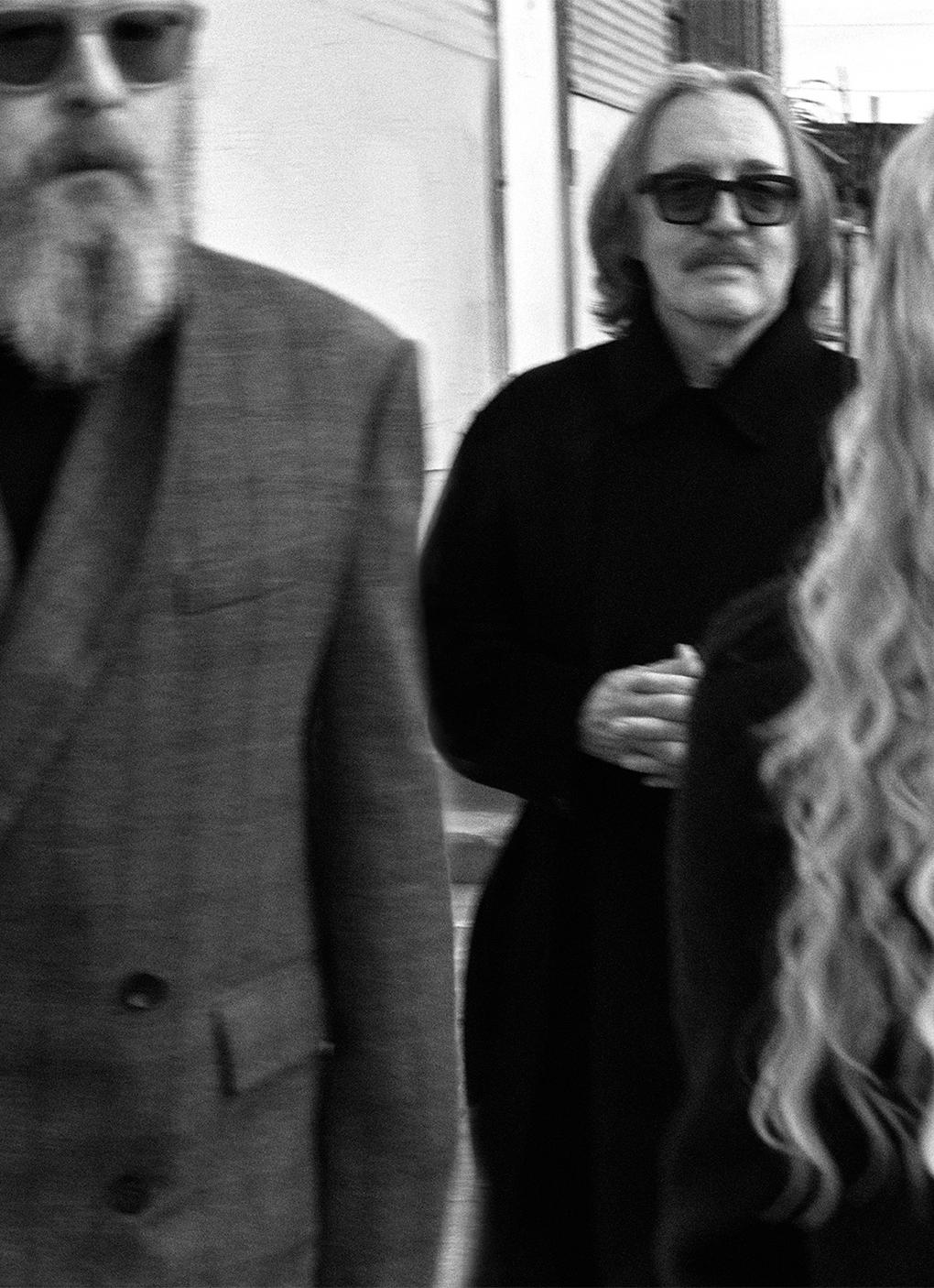
Shirley Manson from Garbage, past 20 million in album sales, talks to KIND editor Ben Kaplan about why tenderness keep her indie rocking with her seminal band

Butch Vig, drummer and producer of Garbage, produced Nirvana’s Nevermind When he and bandmates Duke Erikson and Steve Marker wanted to form a group, they plucked singer Shirley Manson from obscurity. The Scottish contralto with the big voice and combat boots helped the group become a 90s era indie rock mainstay behind such hits as Stupid Girl, Only Happy When it Rains and The World is Not Enough, the theme song to the 1999 iteration of James Bond. Today, Garbage is back with a blistering, synth-heavy rock ‘n’ roll dance record called Let All That We Imagine Be the Light, which Manson says she wrote for herself as a salvo against the oppressive nature of modern times. “I felt like the world seemed to be descending into such unbelievable chaos and darkness and I wanted to reject that violence, cruelty and othering and stand in opposition to that and radiate tenderness and love.”


BK: As a Garbage fan and fan of Shirley Manson, I want to first and foremost congratulate you on the excellent disc.
Shirley Manson: Thank you. It’s obviously di erent every time we go in to make a new record. Like a bucking bronco, you can’t have any preconceived notion of how it’s going to go.
keyboards and more electronic components than I expected and the mood was dark, which I was grateful for because I was bed-bound at the time we started work on the record.
BK: I like how the music’s sort of dark but the words are uplifting. That seems to be a trend in popular dance music today.
SM: I had a definite idea on how I wanted to approach the new record, and felt a bit of dismay when the band sent me the first single titled There’s No Future in Optimism. They were coming from the opposite perspective as I was, but I decided I would argue with that philosophy but keep the title because I thought it was provocative, cinematic and expansive and a springboard for all the songs on the new record.
BK: That’s right. Can you tell me what happened?
SM: Hip replacement surgery, so I was unable to go into the studio and I was su ering from severe brain fog so the sounds came together perfectly in a way.
push myself to get better. I want to keep learning and be a student of music, melody and words, and that’s been a revelation for me.
BK: A springboard how?
SM: All the songs are a reaction against that title.
BK: How so?
SM: The music has a dystopian feel that matched the feelings I had of disorientation, panic and fear and then, in counter, it stirred my determination to resist that through employing love and kindness as opposed to cruelty, judgment and harshness.
BK: When you’re young and cool it’s all so e ortless and carefree.
SM: It was thoughtless, and as I’ve gotten older, everything has become more deliberate and that’s exciting. It’s a fascinating revelation.
BK: Butch is obviously amongst the world’s great all-time producers, but I still find it dizzying how fresh the new music feels. It’s definitely not a nostalgia trip.
SM: It feels very cinematic to me. Analog synths,
BK: Again that theme of fighting hate with love.
SM: I’m just learning how to be a good writer. I’ve stumbled on a style of my own the more I adhere to writing what I want to hear somebody say.
BK: What’s your favourite part of this iteration of the band?
SM: You want to touch a seed of truth and that sounds much easier than it is. For a long time I realized I was trying to please the band. They picked me out of total obscurity and we became very successful very quickly. For a long while I felt like I had to serve the success, but I realized I wasn’t growing. I was busy trying to fulfill this need that actually had no bearing on me.
BK: I was wondering why you’d even want to make a new record after all the money and fame and I was thinking: for the art. To do what you love.
SM: That’s one of the most glorious surprises of working with our band for 30 years—I still want to
BK: So the choice you made was for artistic survival.
SM: As a woman growing up in the public eye, growing up creatively, I realized I had to reject my past and focus only on the pursuit of truth, authenticity and honesty.

BK: You’re heading out on a long, grueling tour in support of the record. How do you want the shows to feel?
SM: At this point in my career, I can’t a ord to take anything for granted like I once did when I was young. Now every show feels sacred to me and always as I’m leaving the stage inside my brain I say quietly to myself, Thank you so much. Thank you to the people here. To the venue. To the city. Thank you to this country and I genuinely mean it because I don’t know if I’ll get back to these places again.
BK: It’s also a lovely though bittersweet sentiment regarding people—saying goodbye.
SM: When you’re young, everything is just, ‘See you next time, Paris!’ You know you’ll go back there for decades and it’s wonderful, but you get to a certain point as an artist and I’m not going to play Istanbul very many more times in my life, or get to go to Berlin or Amsterdam or Iceland. I don’t know how much longer we’ll get to do it.
BK: Gratitude can’t help but make the music sound sweeter.
SM: My band, we’re all healthy. Still, we’re all the four original members which makes us incredibly unique. We’re like dinosaurs, the last of our kind, and I realize how precious that is, but it’s not going to last forever so I want each show to feel sacred. I want there to be a connection. That’s all that matters to me.
BK: Obviously you’ve been a huge influence on a massive wave of female rock stars, especially some of the very best rockers up here.
SM: I have nothing but contempt for the modern music industry. I feel it’s even more exploitative now than it was when we emerged in the 90s, but my concern is for the artists, and the art. My love, respect and pride in being a musician rages strongly still in me and I’ve had the great privilege of sharing the stage with Emily Haines from Metric and the great Alanis Morissette, both women I very much admire and respect, and of course the Beaches.
I meet young artists who might know who we are and I’d love to be cool and say it didn’t matter, but it matters. I feel like I’m part of something big, resilient and expansive.
no one sees the e ort that requires underneath and although she’s getting her flowers, I’m concerned it’s not hardly enough. We’ll be singing Blondie songs for the rest of time because they’re that good.
BK: And Garbage songs.
BK: We love the Beaches.
SM: I’m always filled with a sense of joy whenever
BK: I like how the Beaches see you as you saw Debbie Harry and the whole thing is one great revolutionary continuum.
SM: I’ve had the great honour of meeting Patti Smith, Debbie Harry, Chrissie Hynde, Stevie Nicks. I’ve spent time with all my female heroes and they’ve taught me the powers that as an adult woman you can bolster the confidence of a young artist and how easily you can crush that beauty so I’m always careful around other artists. I’m aware I hold something fragile in my hands.
SM: That’s nice.
BK: Before we leave, we have lots of young readers, readers going through it and su ering and I’d like you to speak directly to young fans.
BK: I know you have disdain for how the music industry treats women.
SM: Female talents are held to these insane standards on beauty, style and flare in ways male artists aren’t and it’s much harder for female artists to be taken seriously as weighty artists. It remains challenging for female artists to be spoken of in the hallowed terms of their male counterparts.
SM: I doubt many younger people will be exposed to our record because they’re listening to their peers as they should be, but if there’s inquiring minds I’d say that each generation has been told by the previous generation that they’re failing in some way. I want young people to know that the world is vast and despite the negative forces there’s always a world that lies beyond what you have access to and the more knowledge you have, the more you can settle your own feathers.
BK: Like Dylan’s a genius and Debbie Harry is hot.
SM: Men are told, particularly older males, how much agency they hold. How iconic and brilliant they are and women, not so much. Women are criticized for ageing and I resist that. I want young women to know there’s so much potential, even in your 70s or 80s, like Grace Jones and Chaka Khan. We have Debbie Harry stepping into her eighth decade and she remains robust, arguably more famous now than she’s ever been.
BK: What’s the secret?
SM: Keep a broad and hungry mind.
For tour dates starting July 20 in Minnesota and updates on the band, see Garbage.com.
BK: I interviewed her not long ago in a tiny rock club and everyone walked on eggshells, but she couldn’t have been nicer and more generous and the thing was, she was having fun.
SM: She’s like a swan and because she’s so gorgeous,




